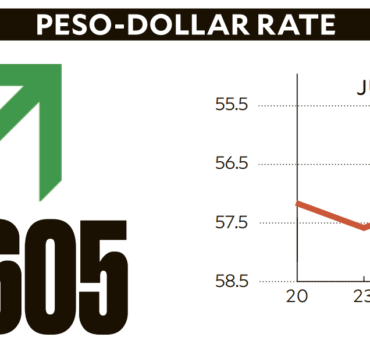Owners take note: 5 gears of strategic brand growth

Every brand follows a life cycle. It begins with vision, grows through market validation, and is ultimately tested by customer demand and its ability to remain relevant.
But what many fail to anticipate is that decline often doesn’t start with failure, it begins when success leads to complacency.
To prevent brand decline, we must look beyond surface-level growth and examine the deeper forces that sustain long-term momentum.
Like gears in a machine, each part must be aligned. One faulty gear, and the whole system slows down. All five must work together to ensure scalable success and prevent decline.
Let’s walk through each gear.
Gear 1: Brand foundation: Define before you grow
Before growth, there must be clarity around your brand’s foundation. This includes:
Brand identity: Who are we? What do we stand for? Why should we matter? This defines your brand’s purpose, positioning, tone, values, and visual elements. It shapes how you are seen and remembered.
Brand architecture: How do your products relate to one another? Whether you choose a Branded House like Apple, a House of Brands like Unilever, or Brand Extensions like Nescafé, your architecture must remain clear and scalable.
Without clarity in identity and architecture, growth becomes chaotic and confusing. With clarity, you gain alignment, essential for every stage of brand building.
Gear 2: Brand growth: bring the brand to life
Once the foundation is solid, brands look for growth. Growth, however, must be strategic. There are multiple ways to grow a brand:
Franchising allows rapid replication of your business model, demonstrated by TGP and Potato Corner, with over 2,000 and 1,000 stores respectively.
Cobranding creates synergy by partnering with equally trusted brands, like Nike + Apple or Uber + Spotify.
Licensing lets your brand expand into new categories without direct investment, as Disney has done globally.
Private labeling generates additional revenue by leveraging production capacity while focusing on the manufacturer’s reputation. Lamoiyan markets its Hapee brand and produces for other brands and retailers.
Flanker Brands help target new customer segments without diluting the core brand, like Lexus for Toyota or Sprite for Coca-Cola.
At this stage, reputation becomes a key growth currency. Growth without governance can quickly turn into brand erosion.
Gear 3: Brand safeguard: Build reputation before you need it
The best time to safeguard your brand is before it is under threat. As reach increases, so does visibility and scrutiny.
Brand safeguard ensures long-term trust. This includes:
Reputation management involves shaping your brand narrative continuously, not just during crises. For example, the SM Group has positioned itself as a leader in retail, property, and banking. Through transparency, strategic communications, and community engagement, it maintains a strong image.
Crisis prevention uses data and sentiment analysis to detect early warning signs. Cebu Pacific Air listens to social media conversations to address concerns before they escalate.
Goodwill building focuses on CSR initiatives and treating employees and customers as brand advocates. Mega Sardines, with their easy-open cans, has partnered with NGOs to help in disaster relief efforts.
Crisis management requires preparation for negative events. When Jollibee faced the temporary closure of 72 stores in 2014 due to an IT migration, swift public communication helped manage the fallout.
A single mistake may not destroy a brand. But how it responds can define it forever.
In highly regulated industries like healthcare or finance, Gear 3 (Brand Safeguard) should precede Gear 2 (Brand Growth). A strong reputation from the start enables more confident scaling in scrutinized sectors.
Gear 4: Brand scaling: Expanding sustainably and strategically
Many brands want to scale, but few prepare their systems for it. Scaling isn’t just about opening more branches or increasing marketing budgets, it’s about improving efficiency as you expand. This means profitability without proportionate increases in costs.
Scaling opportunities include:
Product opportunity: NutriAsia’s UFC brand expanded from sauces into ready-to-use rice mixes, responding to the growing demand for convenience.
Market opportunity: JS Unitrade extended its EQ diaper brand to Caress adult diapers, catering to the aging population and caregivers.
Channel opportunity: Fly Ace expanded by partnering with e-commerce platforms, making its products more accessible to digitally savvy consumers.
Geographic opportunity: Shakey’s continuously expanded across the Philippines and even launched party trucks, bringing pizza directly to customer events.
Business model opportunity: Bayad redefined its model by offering franchise opportunities and expanding digital bill payment services via apps and online platforms.
Scaling successfully means investing in people, systems, and culture so that growth enhances, not stretches, the brand.
Gear 5: Brand demand generation: Ensuring continued market relevance and demand
The final gear is about avoiding decline and ensuring sustained growth. Even the best strategies can lose momentum if they don’t consistently generate demand or adapt to market shifts.
The 4 Us Framework helps sustain that demand:
New users: Converge launched its Surf2Sawa prepaid fiber internet product to target low-income households in Metro Manila, providing affordable internet to underserved communities.
Extended users: Gardenia expanded its product line to include healthier options, like high-fiber whole wheat bread, tapping into the growing health-conscious segment in the Philippines.
New usage: Orocan shifted its plastic pails from being bathroom-only items to include jugs and coolers for personal hydration needs, expanding their product’s utility.
More usage: Del Monte Kitchenomics promotes diverse recipes using their tomato sauces and fruit products. By sharing dishes like spaghetti, lasagna and fruit salads, they drive repeated usage in daily cooking.
Every marketing campaign, every customer interaction, must reinforce your brand’s core. Demand generation isn’t just about driving sales, it’s about sustaining relevance and reinforcing your identity.
Brand as a system
The five gears don’t always turn in a specific order. Depending on your brand’s stage, you may focus on safeguarding before scaling or revisit your identity as growth outpaces clarity. But all five gears must turn in alignment.
Growth isn’t just about launching more products or opening new stores. It’s about creating a consistent, customer-centered brand system that’s crisis-ready. If one gear breaks, decline begins through lost trust, unclear positioning, or loss of relevance. But when all gears align, the brand doesn’t just thrives, it grows.
Thank you to Franchise Asia for inviting me to share this framework at their recent international conference.
Josiah Go is chair and chief innovation strategist of Mansmith and Fielders Inc. He is also cofounder of the Mansmith Innovation Awards. To ask Mansmith Innovation team to help challenge assumptions in your industries, email info@mansmith.net.





















